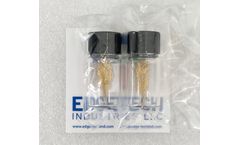Refine by
Blood Vessel Articles & Analysis: This-Year
6 articles found
From aneurysm treatments to stroke interventions, the use of radiopaque marker bands ensures precise device navigation and placement within the intricate blood vessels of the brain. The innovation in materials, such as platinum-iridium alloys, enhances both visibility and biocompatibility, making these bands indispensable tools in modern neurovascular treatments. ...
It becomes crucial to investigate natural drug delivery systems when considering treatment methods for diseases. The blood circulation contains platelets as the second most abundant blood cell which perform multiple functions and present themselves as ideal drug carriers. ...
Vascular access The physician will identify an appropriate blood vessel for access, typically the radial or femoral artery. Catheter insertion A catheter will be inserted into the selected blood vessel, positioning the catheter tip at the cerebral vessel intended for examination. Contrast agent ...
Mechanism of Action Serrapeptase exhibits unique mechanisms that contribute to its effectiveness in treating various conditions: Anti-inflammatory Effects: By degrading fibrin, a protein involved in blood clotting and tissue healing, serrapeptase can help reduce inflammation. ...
One such innovation is the radiopaque marker band, a crucial component in catheters used to navigate the complex network of blood vessels within the body. These tiny bands, often no larger than a grain of rice, enable medical professionals to precisely track the placement of catheters during invasive procedures. ...
Others synthesized and shaped RBCNPs (red blood cell membrane-encapsulated nanoparticles), and targeted the excised red blood cell membranes twice, with DWSW peptide and asparagine-glycine-arginine (NGR) peptide. ...




